Many people bought a slow cooker only to leave it to gather dust on top of their fridge. That’s really too bad because using a slow cooker for plant-based cooking is a great way to decouple cooking from eating: throw in the ingredients in the morning, switch it on to “low” for the day, and come back to a fragrant simmered dinner waiting for you in the kitchen 8 hours later. It makes an even greater contribution if incorporated into your weekend batch cooking arsenal, as I will explain below. For good results, however, you do need to know what’s the right thing to cook in there.
Jump straight to the topics you are curious about
Why did slow cookers seem to fall out of favor?
With the aggressive marketing of Instant Pots these past few years, the more low-key and decidedly inexpensive slow cookers have sadly been forgotten. Some people – myself included! – even made the mistake of letting go of their slow cooker when they first got an IP, which I quickly found out to be a mistake. From a business standpoint, slow cookers aren’t great: the simpler they are, the better they perform, so you can’t re-market them and sell many more units by adding new features every other year. No repeat customers! Plus, they don’t even break easily. But don’t be fooled: slow cookers are great for plant-based cooking and I recommend that you use yours at least once or twice per week.
In this post, I will review the main benefits of slow cookers for plant-based cooking, talk about the downsides (and how to work around them), and make some suggestions for recipes that work great in the crock. I’d love to hear about your favorite slow cooker dishes in the comments below.
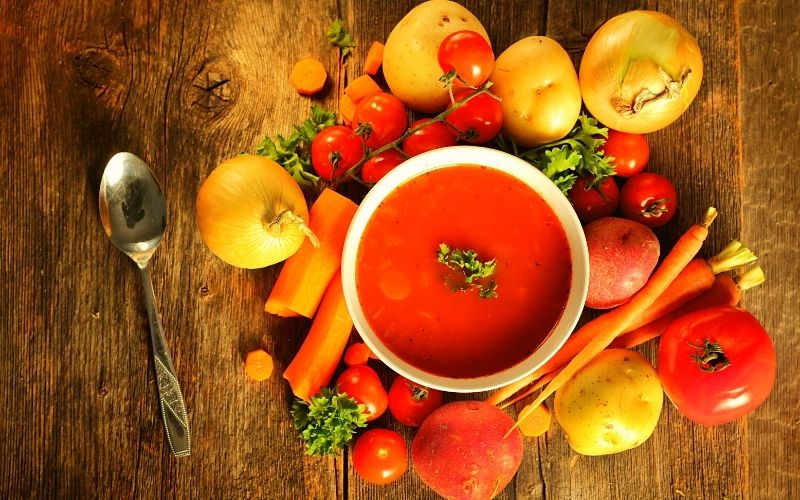
Benefits of using a slow cooker for plant-based cooking
- Simplicity: Slow cookers basically apply the heat equivalent of a 100-watt light bulb all around a ceramic pot. All you need to do is plug them in and switch them on.
- Easy: Throw in a sensible bunch of ingredients and, six to eight hours later, you have a delicious soup or stew. It’s not fancy cuisine, but the vegetables will retain all their nutrients and the result is practically certain to be comforting. Anyone can do it.
- Safety: As long as you put them far enough away from the edge of your counter, and avoid touching the sides when heated up, nothing bad will happen when slow cooking.
- Set it and forget it: Put the food in there, add the lid, and walk away. When you lift the lid again in 6-8 hours, your soup or stew will be ready.
- Ease of cleaning: You only have one pot to clean. Assuming you didn’t overfill it, the risk of spill is low. Plant-based dishes rarely stick to the crock because they are “wet” recipes with large volumes of water, and having the lid on prevents evaporation and thus avoids the formation of a sticky rim around the crock.
- Oil optional: It’s absolutely not necessary to add oil to cook plant-based ingredients in the slow cooker. (You can read more about my stance on oil in this post: Should we cook with oil?)
What’s not to love? Those benefits are the reasons why I include a slow cooked recipe in almost every single week of the Vegan Meal Plans.
Downsides of using a slow cooker for plant-based cooking (and how to avoid them)
- Blandness due to under-seasoning: When cooking on the stovetop, we often simmer a soup or stew for at least 20 minutes, often more. During that time, some of the water content evaporates, concentrating the flavors. In a slow cooker, the lid has to stay on through the whole cooking process (since the heat applied is low). I suggest using about 20% less liquid than you would use in a comparable stovetop recipe, and increasing the amount of seasoning, for more flavorful results. Use more spices and, if using powdered vegetable broth, use a little more powder per volume of water.
- Less caramelization: When cooking on the stovetop, practically every soup or stew recipe starts with sautéing an onion (and often carrots and celery too) for at least 5 minutes. Upon contact with heat, the vegetables’ release their sugars and add great flavor to the dish. There is no direct way to replicate this in the slow cooker. One work-around for this issue is cooking extra onion when preparing a stovetop dish and refrigerating it for the next time you need that extra sweetness in a slow cooker dish. Integrating the slow cooker to my weekend batch cooking session also helps streamline this process. If there isn’t cooked onion available, the boosting the other flavorings (spices, herbs, and other toppings) can make up for the reduced caramelization. And… psst! If all else fails, stir in a teaspoon of maple syrup. Such a small quantity in such a big pot will not negatively impact your health, but it will be enough to enhance the taste of your dish. Don’t tell anyone I said that.
- No crunch: Simmering is by definition a wet cooking method. The flavors of each ingredient in your dish will meld with those of others, rather than remain encapsulated. If you want to create a crunchy impression, you’ll need dry heat. Still, you can make slow cooker dishes more complex by adding toppings before serving: crumbled tortilla chips, vegan parm nuts, fresh or frozen corn kernels, sliced green onions, etc.
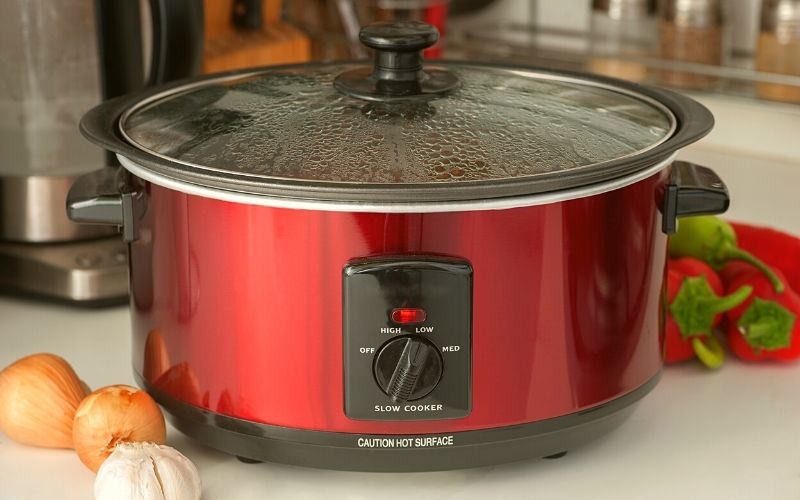
My best recipes for the slow cooker
Slow cookers are the natural allies of all things simmered, so soups and stews are perfect to cook in that crock. Here are some examples. In practically every case, you will want to start with an onion, add a bunch of vegetables, probably some beans or lentils, and suitable seasonings, plus some liquids.
- Chilis and curries: Onion, garlic, carrots, bell peppers (I prefer red but one green in the mix would be fine), maybe some diced squash, or other dense veggies like cauliflower. Add cooked beans or chickpeas and seasonings. For a chili, use cumin, oregano, chili powder, and smoked paprika. For a curry, use cumin, coriander, turmeric (with black pepper always), and other Indian-inspired spices, plus ginger if desired. Add your preferred liquid combo (vegetable broth and/or crushed tomatoes, perhaps a can of coconut milk for a creamy curry) so the pot is half to 3/4 full and cook on low for 7-8 hours.
- Lentil soups: My favorite is red lentil soup with onion, garlic, ginger, carrots, orange sweet potato, a bit of orange juice (or just a peeled orange with the seeds removed), about 1 1/2 cups of red lentils (rinsed), and 5 cups vegetable broth. I add cumin, turmeric, and coriander, plus fresh ground pepper and maybe a pinch of cinnamon. After 6-8 hours, I blend it smooth with an immersion blender. You can also make a more Euro-styled veggie and lentil soup by using the ingredients from my Rustic Veggie Soup recipe, substituting green lentils for the cannellini beans and cooking it all on low for 7-8 hours.
- Spaghetti sauce: Keep it simple: onion, carrot, celery, lots of garlic, two big cans of crushed tomatoes, plus oregano and basil. You can add 1/2 cup of green, brown, or black dry lentils plus about 1 1/2 cups of vegetable broth for extra protein. Cook it all up for 7-8 hours on low. If you have time, instead of the lentils, you could crumble a package of extra-firm tofu into chunks, mix it up with a little soy sauce, balsamic vinegar, and a liquid sweetener (I prefer blackstrap molasses here), and roast the crumbs in the oven for a little bit. (Don’t let them burn!) Blend the sauce smooth with an immersion blender if desired, then add the roasted tofu crumbs.
- Orange sweet potatoes and butternut squashes: The slow cooker can be a convenient way to cook your big orange sweet potatoes (yam) or butternut squashes. Just plop them in the crock, add 1 to 2 cups of water to cover the bottom, and make sure the lid is on so it doesn’t run dry. Cook on low for at least 6 hours or until a knife pierces the vegetables’ flesh easily. I suppose this would also work with beets (brush them clean) but I haven’t tried it yet. (You would have to peel the beets once they are cool enough to handle, whereas the sweet potatoes’ skins are perfectly fine to eat and also very nutritious.)
What slow cooker to buy for plant-based cooking?
Buy the simplest slow cooker you can find, with the smallest number of features. It should be manual (not electronic or programmable in any way), with just a switch to choose between “off,” “low,” and “high” heat. Some slow cookers also feature a “keep warm” temperature that is good when serving, say, bean chili to a crowd on game day, but really it’s a frill feature that isn’t completely required.
Why the allergy to features? My experience is that programmable and electronic slow cookers are prone to error and failure. I’ve had one that would spontaneously switch from low to high at a random point during cooking, ruining my dinner in the process. The electronic panel of another one stopped working one day and could not be revived – again ruining dinner, and requiring replacement. The idea of programming the slow cooker to go from “low” to “keep warm” after a certain number of hours is appealing in theory, but really cooking on low for another hour will not ruin your soup. If no-one will be back home to attend your food within 10 hours, then it’s probably not a great idea to leave a small, hot appliance running for that long anyway.
What about size?
I find that the six-quart size is perfect because it allows to cook approximately 8-10 individual portions, with enough room to spare at the top that the contents don’t spill every time you stir. The extra food goes for lunches or into the freezer for another week.
Four-quart slow cookers can be frustrating as they will be too small to double up recipes. The tiny two-quart ones are really only good to keep artichoke dip warm in a party spread.
As for the really big, eight-quart slow cookers, I find that they are hard to store in the average kitchen cabinets and also slower to warm up, thus extending cooking time.
Where should I buy my slow cooker for plant-based cooking?
Slow cookers – the simpler ones with only manual switch described above – are the perfect item to buy second-hand. Thrift stores and Facebook Marketplace are two common places to search. To be extra safe, you can test it with water and a thermometer before your first “official” use, so you don’t ruin a pot of soup. (The water should reach a temperature of at least 170 degrees F or 80 C on the low setting after 3-4 hours.) That should set you back about $10. You might score a free one from a friend or your local Buy Nothing Project group.
If you insist on buying it from a store, the models I recommend cost less than $25.
Whatever you do, please don’t get it from Amazon.
Why slow cookers are great appliances for batch cooking
Weekend batch cooking sessions are the most efficient way to use our time in the kitchen, especially when following a carefully crafted plan. Adding a slow cooker to the mix can make those sessions go even further. Here’s how:
- Plan to have at least one soup or stew on the stovetop and one in the slow cooker.
- Double up the quantity of onions (and carrots and celery, if using) for the stovetop recipe. Cook for 10 minutes, stirring occasionally. Add garlic in the last minute.
- Transfer half of the cooked onion mixture to the slow cooker. Dump in the rest of the slow cooker recipe’s ingredients and cook on low for 7-8 hours.
The result will be a whole extra ready-made pot of soup or stew, with hardly any additional dishes or time spent at the stove.
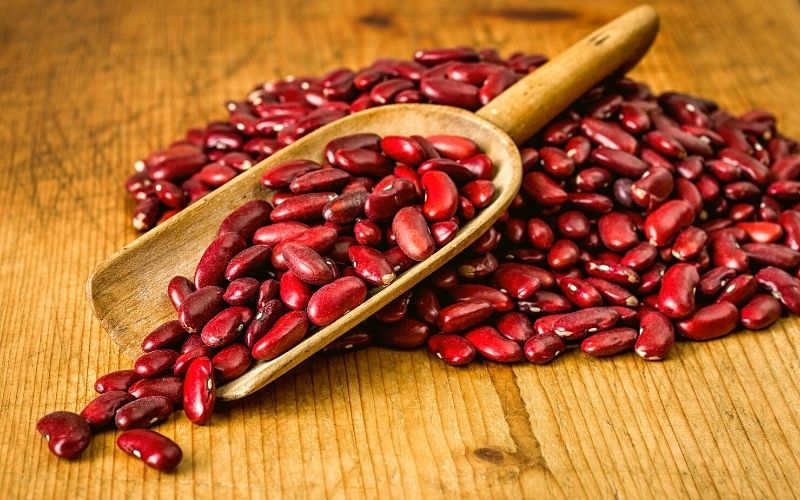
Why I don’t recommend cooking (most) dry beans from scratch in the slow cooker?
Some beans, when raw, contain a naturally-occurring lectin-type protein called phytohaemagglutin, or PHA, that cause damage to red blood cells. (Phyto means plant, haema refers to blood, and glutin refers to clumping together.) Kidney beans have the most, but white beans (cannellini), fava beans, and black beans have some too. When PHA is detected in the gastro-intestinal system, our body is very eager to get rid of it, leading to vomiting and diarrhea. Although it can be violent, the reaction is usually ridden out by healthy people in just a few hours. However, those with compromised health could end up in hospital, or worse.
Thankfully, this can all be avoided by cooking those beans thoroughly. They need to be brought to at least 80 degrees Celcius or 176 degrees Fahrenheit for at least 30 minutes (possibly less if the beans were previously soaked). Unfortunately, the slow cooker does not reliably reach those temperatures. That is why I do not recommend cooking dry beans from scratch in it. My preferred method for cooking beans from scratch is the Instant Pot. Previously, I just used the stovetop method, but it takes longer, requires more attention, and generates lots of vapor.
Chickpeas and lentils however are fine to cook in the slow cooker as they do not have a problem dose of PHA.
(Worried about lectins in general after reading The Plant Paradox? This video from nutritionfacts.org debunks the myths: Are Lectins Good or Bad For You?)
Can’t I use my Instant Pot instead of a slow cooker for plant-based cooking?
Most (all?) electronic pressure cookers have a “slow cook” mode… but personally I don’t trust slow cooked meals with my Instant Pot. In single-function slow cookers, the heat comes evenly distributed from all around the crock, whereas the element of the Instant Pot is on the bottom. It is more likely to lead to burnt food at the bottom of the pot and uncooked food at the top.
This being said, if all you have is an Instant Pot right now, you can make it work almost like a slow cooker by using it on the “low” setting only (check your manual), stirring the food every 2-3 hours or so (scraping the bottom to make sure there are no burnt bits there), and increasing the total cooking time by perhaps an hour (to make up for the times when you lifted the lid). Make sure to review your manual’s instructions with regards to proper lid placement during slow cooking (or use a glass lid from a different pot). It may not be a good fit if you are going to walk away for the whole day, but if you are working from home it’s probably fine.
If you have the extra space in your kitchen – above your fridge perhaps? – consider spending the $10 to get a separate slow cooker.

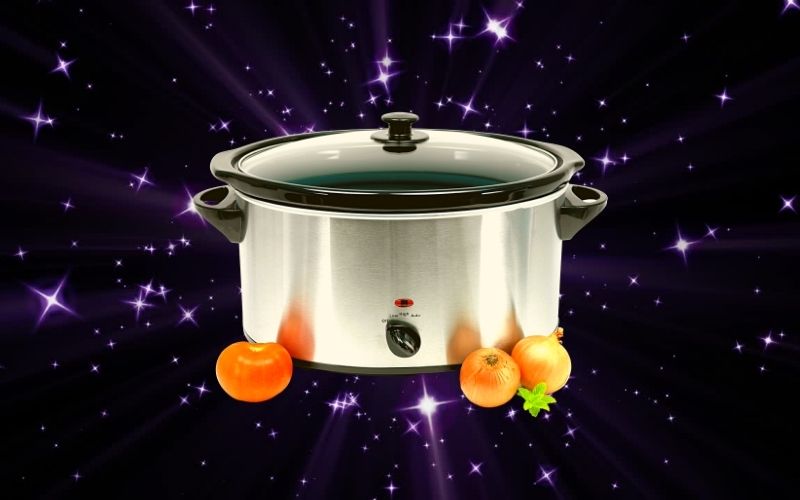

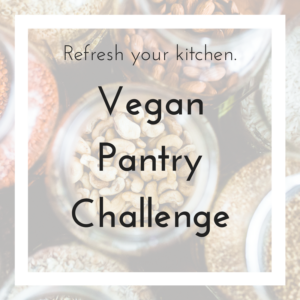
Yes, I will use my slow cooker this week to make your bolo sauce recipe. I love your slow cooker recipes!
Fantastic! Thank you Marian for cooking plants and inspiring so many others to do the same.